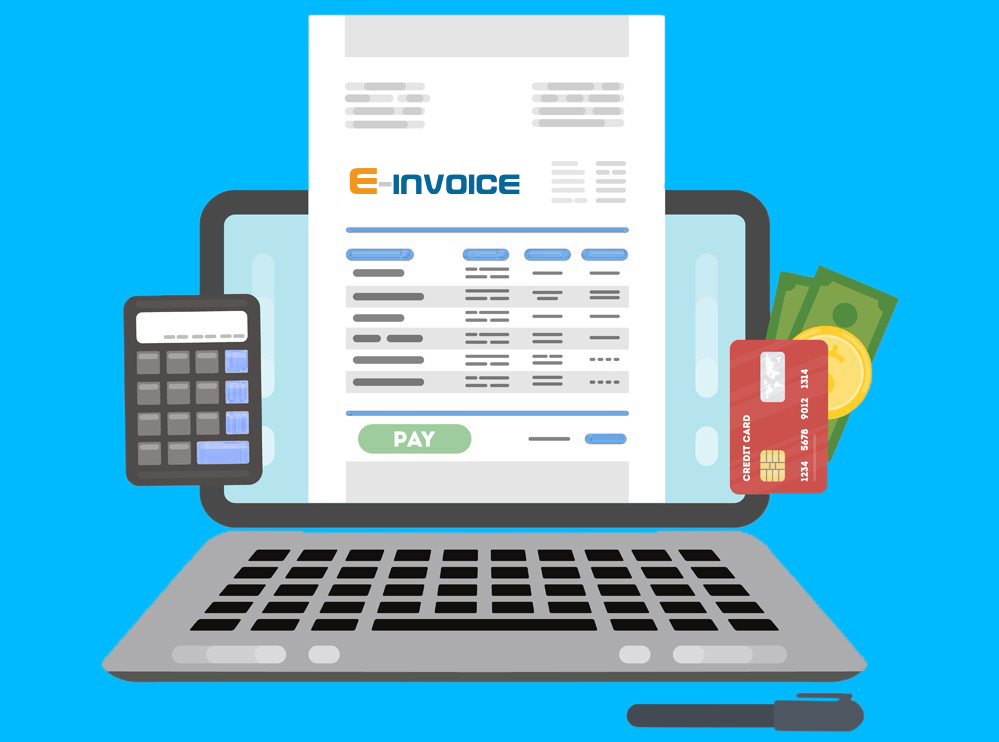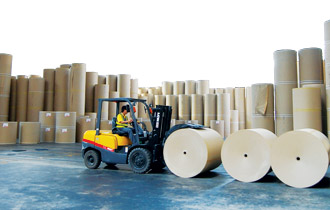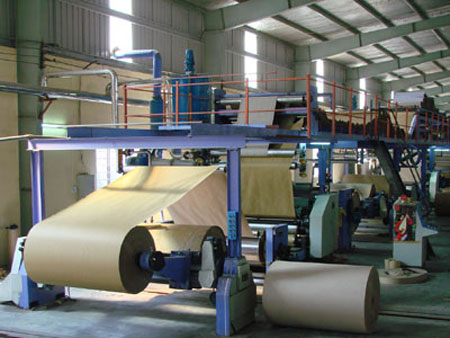State of Recovered Paper
Market News
Bill Moore is the owner and founder of Moore & Associates. Based out of Atlanta, Moore works globally and is focused on everything that has to do with paper recycling, particularly with recovered paper commodities markets. After 30 years in the business, this focus on recovered paper makes Bill Moore one of the industry’s foremost experts on the subject of paper recycling and recovered paper commodities markets.

Recycling Product News: How would you characterize recovered paper markets currently?
Bill Moore (BM): Strong. We have come out of about two years of some real doldrums. Beginning in the second quarter of 2016, prices have pretty much steadily moved up. We had some sideways movement in September, but prices shot up quite a bit in November through December and continued into January. We’ll see what February holds. The week-long Chinese New Year celebration always has a moderating effect on the market.
How have recovered paper prices for OCC (old corrugated containers), Mixed Paper and other major grades been over the last year specifically?
BM: To use OCC as an example (OCC is the industry benchmark grade) at the end of the first quarter, we were probably wallowing around $75 or $85 per U.S. short ton. (When I talk about prices, I mean price per US short tons (2,000 pounds) and then you can make the conversion to the Canadian dollar which has hovered around $0.75 as of late.) I would say the range for OCC for 2016 overall was 75 to 100. We’re now in the 150 to 185 range, so that’s a pretty sharp increase. And Mixed Paper has closely exhibited the same characteristics, as has SOP (sorted office paper). Mixed Paper was bumping along at 60 to 70 near the end of March. It’s now 125 plus, so it’s just about doubled. SOP, last spring was maybe 135 and it’s now 175 to 185. ONP (old newsprint) has followed a similar upward trend this past year.
If you were to characterize the most prevalent factors that affect the price of recovered paper globally, what would you say they are?
BM: Chinese demand for Mixed Paper and OCC is number one. Secondly would be the short supply of ONP and office grades, followed by the potential Mixed Paper oversupply at times. Also notable is that there have been a large amount of mill/paper machine shut-downs in North America, and around the world, many in the graphic paper category (printing/writing and newsprint). Most of the printing/writing paper mills were virgin mills, and newsprint has always been somewhat oriented to recycled paper. There is much less overall demand globally for newsprint and for printing/writing papers than there was a decade ago, and there is much less produced.
The interesting thing is the conversions that are happening as a result of the shutdowns in this sector; many of the industry’s printing/writing mills and newsprint mills are being converted to produce recycled fibre containerboard for corrugated boxes, using OCC. So OCC has a strong demand trend going forward. Another issue currently has to do with the global shipping and container industry, which is very important to recovered paper and which is in some real trouble. The ocean container industry has not made a lot of money over the last five years.
How do global markets and currencies affect the price of recovered paper?
BM: Currency is very important in recovered paper business, and Canada’s currency hasn’t fallen against the U.S. the way Asia’s has. Surprisingly even with the strong U.S. dollar, our recovered paper is pretty sought after around the world. North American fibre is very strong because we have a lot of virgin-based paper production. So, all things being equal, global buyers will always seek out North American paper before buying from Europe, the Middle East, or even Japan.
How are major global export markets changing?
BM: China’s demand has picked up a bit and they’ve had a shock price spike even sharper than we have internal to North America. Europe’s prices have been less robust than North America and Asia. There’s really not much flow from North America to Europe. Europe has a lot of domestic consumption and they export to Asia, just like we do, but less so. India is a fast growing market but China remains the largest export market for North America.
The U.S. uses about 60 percent of its own material, with about 40 percent exported. Twenty-five years ago, Canada was the largest importer of U.S. recovered paper. Now our largest export markets are China and India, with Mexico and Canada ranked 4th and 5th. The fastest growing, on a percentage and size basis, is India. But the market is much smaller than China. India is not really as much of a manufacturing-based society as some others. So the grades are a bit different, and their paper industry is different. Indian paper mills are generally very small but they have hundreds and hundreds of tiny paper mills. On a gross percentage basis, Vietnam is actually the fastest growing export market for recovered paper currently. It’s much smaller than India in terms of its industry, but Vietnam is making a lot of goods, and a lot of boxes.
In China, are ‘green fence’ import restrictions still a prevalent issue and how does that affect paper markets?
BM: Yeah, it is, it’s still there, but it’s become the norm. I always thank the Chinese for doing it because it put a bottom on the decline in quality of recovered paper, which had been happening for 25 years, specifically for Mixed Paper. Finally, China said “enough,” as the paper they were importing had become almost unusable. Since they implemented quality restrictions on imported recyclables, our industry had to get a lot more careful about what was shipped to China. One of the anomalies that we have seen in Mixed Paper is that, while demand was dropping and supply was increasing, the price still held up. The thing we can attribute it to is that our industry has become very careful about the quality being shipped to China and it is the high-quality mix that has commanded a premium price.
Still, mixed is the large percentage of what China is importing. Both mixed and OCC. As a percentage of North American supply, it’s more Mixed Paper. Most of the Mixed Paper collected in the U.S. goes offshore, to the tune of 70 percent, and China buys 70 percent of that. So, China is the global Mixed Paper market. With their Mixed Paper imports they are making mostly primary and secondary packaging, corrugated boxes and boxboard.
Do you expect Chinese demand for recovered paper to increase or remain consistent for this coming year?
BM: We think it will be consistent to increased, and of course their businesses depend largely on what consumers in North America and Europe are doing, as well as domestic consumers. Chinese consumer activity has been flat, but there is a recent pick up which is a good sign. We’d like to see China back in the game a little more. It’s good for the recycling business.
What about trade in recovered paper between the U.S. and Canada?
BM: The U.S. and Canada are largely a single market. We trade borderlessly, and sometimes you’ll find Canadian internal pricing is in US dollars per short ton [as opposed to metric or ‘long’ tonnes]. There’s very, very little flow from Canada to the U.S.; it’s only in unusual situations that this would occur. From the US, there is a steady flow of mostly high grades into Canada, for the tissue business, as there is just not enough internal supply in Canada, and there’s some flow of OCC. But there is virtually no Mixed Paper flow between the U.S. and Canada. It’s just not a grade that’s used much in North America.
Where is the excess supply in Mixed Paper coming from specifically?
BM: The rise in supply of Mixed Paper has one major component and that’s from residential curbside collection. Most of the Mixed Paper in today’s market is coming from residential sources, but Mixed Paper collected doesn’t lend itself to making anything other than lower-grade products. We separate the best paper (usually only OCC) from curbside collection, but everything left is Mixed Paper. Residents are good at putting out a lot of materials at the curb, so it’s a mixed stream and because of this, the paper from curbside is a difficult-to-use grade. Because of its lower quality and the mixed fibres it contains, when the market is oversupplied, and Chinese demand is down, the price can really fall out.
How would you characterize the long-term decline in the size of the ONP (old newspapers) market?
BM: The ONP market is really characterized by being supply-short. Since there’s a lot less newspapers in circulation and less newsprint mills operating, we don’t need as much recovered paper for production of newsprint and there is not as much in circulation for supply. ONP goes into recycled newsprint, boxboard, and into non-paper uses such as ceiling tiles, egg cartons and molded fibre. The molded fibre market is one area that is growing for ONP. Molded fibres are increasingly being used in electronics packaging, for example, in place of EPS (expanded polystyrene). But there is a disconnect between ONP and all of the specialized industries that rely on it. They all have difficulty getting material, especially a clean supply.
How would you characterize the decline in supply of SOP and other high grades?
BM: The global SOP market basically peaked out about five years ago. Businesses are using less paper in the office, they’re storing less paper in files, there’s less document and record destruction taking place. If you look at the production of printing and writing papers which go into SOP, those grades are now declining with respect to supply as rapidly as newsprint was at one time. There is less printing and writing papers being used, not only in North America but in Europe, and the trend is creeping into the rest of the world. So like ONP, we have the beginning of a supply-short situation. There’s less and less SOP, but the demand is even less linked to supply, compared to ONP, because the major users of this grade are the tissue manufacturers. Currently, there’s a total disconnect between tissue production, which is going up, and high grades of recovered paper where the supply is declining.
Do you expect the new administration in the U.S. to affect recovered paper markets?
BM: I’ve watched a lot of administrations come and go with different policies and they never really have affected recycling much. There’s not much federal involvement in the recycling markets. It’s basically a free and open market. But if there are “trade wars,” that would make a difference. China and Mexico are very important to recovered paper markets. I remember when I used to go to China about 15 years ago, they said, “Our big fear is the U.S. will cut off the paper supply to China.” I said, “It’s not going to happen.” I explained that because domestic mills are in the recycling business themselves, they’re just not going to interrupt the flow. So, with our incoming administration I don’t see any interruptions in terms of the market itself. I think there’s probably some upside potential, but I would say the odds of recovered paper markets falling are low. We might see sideways movement, or some upward movements over the next six months. A lot of it depends on global economics and a lot depends on China.
What should North American recyclers of paper keep in mind, when considering the various factors that affect recovered paper markets?
BM: It varies by recyclers and grades. Some are only concerned with throughput, and they wind up making a lot of Mixed Paper. Some do more sorting, but sorting is expensive. I think there are various factors. One is that most think that OCC is going to be their strong material. It’s relatively easy to separate, but the challenge is that it’s already highly recovered. A focus on getting more boxes out of the stream is always a good one.
Another consideration is that the tissue business is probably going to go a little bit more towards being virgin fibre-based, because of the upcoming shortage of SOP/printing and writing paper grades, combined with the fact that the world has an excellent supply of tropical hardwood-based, bleached pulp to make tissue. We’re going to continue to see a decline in SOP generation, both in North America and other parts of the world.
What can paper recyclers do to maintain profitability in the face of volatile recovered paper markets?
BM: Recyclers need to continuously adjust to the stream. Many got caught a bit with the ONP decline, as a good example. The typical residential recycling facility or MRF may be used to seeing an input of about 80 percent of their paper being ONP, or 15 years ago, even 50 percent of their total input might have been ONP. Now, it’s down to about 15 to 25 percent, a dramatic change, and it really has affected many recyclers ability to operate. I think one of the key words for paper recyclers is flexibility, and knowing what the trends are. We knew newsprint was going down and could see it coming and I think the industry was a little slow to react to that. But it’s difficult. You build a facility for $20 million to sort recyclables and five to 10 years into the life of it, the waste stream can change on you. Another thing a recycler can always do is focus on the quality of their material. The higher the quality of the output material, the better the movement, and really the better pricing sellers get over the long run.
What is the key to producing higher quality material from recovered paper?
BM: One is controlling the supply better at the source, which is a change that’s happening. Recycling facilities and collectors are pushing back on the cities saying, “…You’ve got to get your residents to give us better quality, and we need the right to reject material that comes into the MRF.” A lot of contracts with cities and other regional governments don’t have this provision, so recyclers have traditionally had to accept anything, even if it had large amounts of contamination. The education of the generators of paper, whether they be commercial, industrial, institutional or residential, is key. People want to recycle everything, and they don’t understand when they put marginal recyclables in the mix that it actually drags good recyclables downward and negatively affects the industry.
What are the most significant changes you have seen over the last two years in the paper recycling industry?
BM: I think the biggest change that I see in the last two years is this trend of recyclers trying to push more of the cost of recycling paper back on the generators, whether it be residential, cities, counties, provinces, or commercial/industrial/institutional entities, and trying to shed some of the commodity risk. Look at the prices we talked about just this year. It’s been positive this year, but there is always a downside to the market, and most in the recycling business really want to stay away from too much market risk.
What about the established trend towards single stream collection systems; how has it affected paper recycling overall?
BM: Single stream is kind of inevitable as you get higher recovery rates and rising collection costs. If we didn’t have single stream, collection costs would be off the scale. It really does bring down the collection cost, but MRFs have higher processing costs. We’ve become a lot better at operating our MRFs as well. Single stream results in more materials and more participation, but we get a lot of materials that shouldn’t be in there which creates costs for recyclers. There’s a lot of work going on in the industry to educate, control, tag materials, and make generators aware that we really don’t want to put this stuff in there because it just doesn’t work.
We will continue to get better at processing, and better with material preparation at the source. And commercial is moving into single stream now, more rapidly than residential. That’s the only way for collectors to get small commercial accounts is to provide single stream service. But again, getting the right stuff in the bins is so important. MRF technology is also improving all the time and we can sort better and raise the quality, but it’s a matter of cost. If you slow down your sorting, you can do a better job, but it’ll cost more, and the whole equation has to work. It comes down to the fact that some of this cost needs to be pushed back on the generators. RPN
This article was originally published in Recycling Product News, Volume 25, Number 1, January/February 2017.
# TAG
0 bình luận
Viết bình luận
tin liên quan
Tin mới nhất
THÔNG BÁO KẾT QUẢ CHƯƠNG TRÌNH "KHAI XUÂN PHÚ QUÝ – LÌ XÌ HẾT Ý 2024"
16-03-2024 | Tin Tức Công Ty
874 Lượt xem
0 bình luận
THÔNG BÁO VỀ VIỆC THAY ĐỔI ĐỊA CHỈ CỦA VĂN PHÒNG ĐẠI DIỆN TẠI TP. HỒ CHÍ MINH
29-12-2023 | Tin Tức Công Ty
1842 Lượt xem
0 bình luận
tin nổi bật
THÔNG BÁO KẾT QUẢ CHƯƠNG TRÌNH "KHAI XUÂN PHÚ QUÝ – LÌ XÌ HẾT Ý 2024"
16-03-2024 | Tin Tức Công Ty
874 Lượt xem
0 bình luận
Thông báo kết quả trúng thưởng chương trình “Hái Lộc Đầu Xuân Năm 2022”
10-03-2022 | Tin Tức Công Ty
2968 Lượt xem
0 bình luận
tin được xem nhiều nhất
Nguyên liệu ngành giấy: Thiếu nhưng vẫn lãng phí
29-11-2010 | Thông tin thị trường
42736 Lượt xem
0 bình luận
tin theo danh mục
- Thông tin thị trường
- Hoạt động xã hội
- Hoạt động công ty
- Hành trình 20 năm
- Tin Tức Công Ty
- Điều khoản sử dụng
TIN TỨC THEO NĂM









